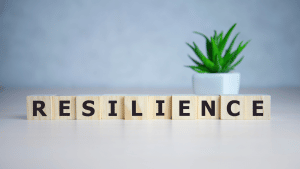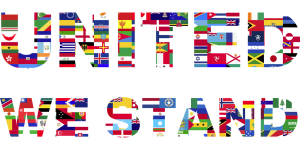 Staying resilient during the holidays can be challenging.
Staying resilient during the holidays can be challenging.
The holidays are a time when many of us feel added pressure and stress
This is especially true when we spend time with our families. If you find yourself feeling tense or wound up after spending time with your loved ones, you’re not alone. It can be tough to keep your cool around the people who know you best, but it is possible. Here are a few tips to help you manage holiday stress:
Holidays with family can be tough for a variety of reasons.
Maybe you find yourself reverting back to old roles or behaving in ways you did when you were younger. It’s easy to fall into old patterns of arguing or storming off when you’re around relatives. But there are ways to cope with these stresses so that you can enjoy your time with your family.
The holidays can bring a lot of joy, but they can also be stressful.
This is often because it’s the only time of year when families gather in one place, which means there are a lot of different personalities to deal with. People are also likely to spend more time in close quarters during the holidays, which can make it difficult to relax and take a break from all the together time. Plus, there’s often a lot of pressure to meet high holiday expectations, which can add even more stress.
If you find yourself getting stressed out this holiday season, don’t worry – you’re not alone. Feeling tense during the holidays is perfectly normal, and there are a few things you can do to try and keep calm.
Remember that it’s okay to feel stressed at times and that you shouldn’t beat yourself up for it. Instead, try to be mindful of when your stress levels start to rise, so you can take steps to care for yourself.
If you’re feeling stressed, angry, let down, or burned out, that’s OK.
These negative emotions are just information and data coming up in your nervous system. You can use physical symptoms of stress, like a racing heart or a flushed face, as a sign to take a deep breath or long walk. Mental cues, like feelings of overwhelm or frustrated, may mean you need to take a break. Awareness allows you to accept these emotions and then take aligned action so your feelings don’t drive your behaviors.
Here are some of the best ways to stay calm during the holidays:
Set Boundaries
If your family just will not stop asking nosy questions or making rude comments, you can shut it down by setting a firm boundary. You can say something like, “I understand you’re curious but I’m not ready to share that.” This will let them know that you’re not comfortable with the conversation and they should respect your wishes.
Stating your boundaries with family members, friends, or anyone else, for that matter, doesn’t always mean they’ll respect them – but you can set consequences if you feel like you’re being pushed too far. For example, if someone asks you a personal question that makes you uncomfortable, you can say something like, “You’ve asked me this several times now and if you continue, I’ll have to leave.” It isn’t easy to set boundaries, but it is the best way to handle a tough crowd. You do have to follow through with the consequences if they keep pushing though, so only set consequences you are prepared to carry through.
Do what you enjoy
One of the best ways to manage holiday stress is by only committing to the parts of the holiday that you actually enjoy. For example, if you love taking a stroll around the city to look at decorations, make that a priority on your list and skip the parts that tend to be more stressful. A lot of times, holiday stress comes from feeling like you have to do everything – and often with people whose company you don’t even enjoy. So by letting your family know that you won’t be able to make it to every event this year, you’re more likely to be able to maintain your peace.
Remove yourself from stressful situations if possible
Don’t force yourself to stay at any holiday gathering for longer than you’re comfortable with – whether it’s a family member’s house or your aunt’s holiday party. It’s okay to make an appearance and then leave if you’re feeling overwhelmed or the day isn’t going according to plan. Make the holidays work on your terms, not the other way around.
If you’re feeling stressed out or overexcited, offer to help with tasks that will let you zone out or take some time away. For example, offer to peel potatoes for the mashed potatoes — it’s repetitive, task-oriented, and likely to be away from the action. Not only will it give you a moment away, but you’ll also get bonus points for helping. It’s a win-win.
Take some time for yourself every day, even if it’s just a few minutes
If you find yourself in the middle of a stressful situation, try to hit pause and take a moment to yourself. Go to the bathroom or outside for some fresh air, and splash cold water on your face or wrists. This will help slow down your heart rate and give you time to respond in a calm and collected way.
One way to help you stay calm and focused when things get overwhelming is to remember that you can always focus on your breath. If you start to feel overwhelmed, take some deep breaths and try to focus on the present moment. This will help you to clear your head and calm down. Deep breathing is basically the simplest and quickest way to chill out, and it’s backed by science.
Don’t try to do everything yourself – delegate tasks and ask for help when needed
 Do you find yourself doing all the planning for your family? Buying groceries or gifts? Or standing in the kitchen alone amongst piles of dirty dishes? If you’re feeling totally overwhelmed, remember to speak up.
Do you find yourself doing all the planning for your family? Buying groceries or gifts? Or standing in the kitchen alone amongst piles of dirty dishes? If you’re feeling totally overwhelmed, remember to speak up.
It’s OK to be clear and direct about what you need. If you need a break or some help, say so. And if you need to say no, go for it. Sometimes you may feel like you need to sacrifice the entirety of yourself for your family, but ultimately, you’ll feel better if you take care of yourself along the way.
Learn to say “No” and be cordial!
It’s okay to come to the realisation that you and your family might never see eye to eye. When that moment comes, instead of trying to win arguments during holiday visits, be cordial instead. This will help prevent any additional stress or tension between family members who might have opposing opinions or beliefs. Smile, remain calm, and keep in mind that you’ll be back in your own home soon enough!
If all else fails, you can always take a step back and observe what’s happening around you. When you learn to observe rather than engage, it can make a world of difference. If you don’t feel like running the show or being the center of attention, take some time to sit back and enjoy yourself. It’s not easy, but it’s important to do what makes you happy and not let anyone else control your emotions.
Holiday stress doesn’t have to get the best of you if you remember that it’s okay to let go of some traditions in order to focus on the ones that mean the most to you and your family. Instead of trying to do everything, pick a few key traditions and stick to them. Remember that some of the best holiday moments are the ones that happen spontaneously, so just relax and enjoy the chaos!
Get plenty of rest
It’s important to take care of yourself physically and mentally during the holiday season. Make sure you’re getting plenty of sleep in the days leading up to and during the holidays. Not only will quality rest help prevent crankiness and burnout, but it’ll also help you better process and cope with everything that’s going on. While the alcohol might be flowing, remember that it also dehydrates and can affect sleep, so limit the quantities and drink plenty of water.
Staying Resilient
Although you might feel like your family is the only one who goes off the deep end during the holidays, it’s important to remember that you’re definitely not alone. Almost everyone feels this way at times during the holiday season. It’s just part of life’s rich tapestry. Give thanks and feel grateful for the wonderful gift of family and give a thought for those that spend the holidays alone.

 Well-being is the feeling of being well and being able to take life in your stride. Gallup encapsulated the breakdown of wellbeing in their book “Wellbeing at Work”, breaking it down into 5 key aspects of wellbeing, that I believe, describe the different elements exceptionally well:
Well-being is the feeling of being well and being able to take life in your stride. Gallup encapsulated the breakdown of wellbeing in their book “Wellbeing at Work”, breaking it down into 5 key aspects of wellbeing, that I believe, describe the different elements exceptionally well:
 10 Key tips to Incorporating Well-being into your organisation
10 Key tips to Incorporating Well-being into your organisation When I took up the piano, little did I know the wonderful side effects! It is a great way to improve brain resilience! To keep our brains resilient we need to take care of our brain’s cognitive and emotional health. Keep your brain healthy by stimulating it with activities that challenge it.
When I took up the piano, little did I know the wonderful side effects! It is a great way to improve brain resilience! To keep our brains resilient we need to take care of our brain’s cognitive and emotional health. Keep your brain healthy by stimulating it with activities that challenge it. Whether it’s a new language, history, or science topic, keeping your brain active can help you retain information.
Whether it’s a new language, history, or science topic, keeping your brain active can help you retain information. It is a long-established fact that exercise is good for our bodies but what about brain resilience? The evidence is very clear – leading a physically active lifestyle provides benefits for overall health and wellbeing. Studies have repeatedly shown that people who are physically active throughout their lives have a lower-than-average risk of a decline in thinking skills with aging.
It is a long-established fact that exercise is good for our bodies but what about brain resilience? The evidence is very clear – leading a physically active lifestyle provides benefits for overall health and wellbeing. Studies have repeatedly shown that people who are physically active throughout their lives have a lower-than-average risk of a decline in thinking skills with aging. Classes aren’t just a way to pass the time – they can actually help keep your brain active and sharp. If you’re interested in a new hobby or want to improve your job performance, taking classes is a great way to learn new things and keep your mind fresh. With so many options available, you’re sure to find a class that’s perfect for you.
Classes aren’t just a way to pass the time – they can actually help keep your brain active and sharp. If you’re interested in a new hobby or want to improve your job performance, taking classes is a great way to learn new things and keep your mind fresh. With so many options available, you’re sure to find a class that’s perfect for you. Over the course of six blogs we are looking at Menopause. Why? Because so many women go through it, without understanding the changes, and how they can manifest. I was diagnosed with burnout back in 2011. I realise, with hindsight, that menopause was a major contributing factor to my symptoms and mental state. Are you in a similar situation? We can have a much better transition if we have a better understanding of menopause. We can learn to work with our bodies and find our personal path.
Over the course of six blogs we are looking at Menopause. Why? Because so many women go through it, without understanding the changes, and how they can manifest. I was diagnosed with burnout back in 2011. I realise, with hindsight, that menopause was a major contributing factor to my symptoms and mental state. Are you in a similar situation? We can have a much better transition if we have a better understanding of menopause. We can learn to work with our bodies and find our personal path.
 In Chinese medicine, the general aging of both men and women can be referred to as ‘Kidney Yin Deficiency’. Certain symptoms may also present as a depletion of Kidney essence. According to the Yin/Yang principles, Yin encourages the cooling process and Yang provides the warming function. Both Yin and Yang play a significant part in health, therefore diagnosing and treating signs and symptoms is prevalent in menopause. Stress and aging can cause disharmonies and depletion of our yin which can induce symptoms like insomnia leading up to menopause. Through this important stage of life, both yin and yang need nourishment to maintain a healthy balance of all symptoms during the menopause.
In Chinese medicine, the general aging of both men and women can be referred to as ‘Kidney Yin Deficiency’. Certain symptoms may also present as a depletion of Kidney essence. According to the Yin/Yang principles, Yin encourages the cooling process and Yang provides the warming function. Both Yin and Yang play a significant part in health, therefore diagnosing and treating signs and symptoms is prevalent in menopause. Stress and aging can cause disharmonies and depletion of our yin which can induce symptoms like insomnia leading up to menopause. Through this important stage of life, both yin and yang need nourishment to maintain a healthy balance of all symptoms during the menopause. Over the course of six blogs we are looking at Menopause. Why? Because so many women go through it, without understanding the changes, and how they can manifest. I was diagnosed with burnout back in 2011. I realise, with hindsight, that menopause was a major contributing factor to my symptoms and mental state. Are you in a similar situation? You can have a much better transition if you have a better understanding of menopause. You can learn to work with your body and find our personal path. I wish I knew then what I know now, and I wish I had met Sarah when I first started experiencing symptoms. My experience would have been very different. Your experience, if you are not post menopause already, still can be.
Over the course of six blogs we are looking at Menopause. Why? Because so many women go through it, without understanding the changes, and how they can manifest. I was diagnosed with burnout back in 2011. I realise, with hindsight, that menopause was a major contributing factor to my symptoms and mental state. Are you in a similar situation? You can have a much better transition if you have a better understanding of menopause. You can learn to work with your body and find our personal path. I wish I knew then what I know now, and I wish I had met Sarah when I first started experiencing symptoms. My experience would have been very different. Your experience, if you are not post menopause already, still can be. your ovaries are slowing down the production of progesterone and oestrogen, your adrenal glands (that produce the stress hormones) take over and produce those hormones. Your body is designed for survival, and will always put that first above anything else. This means that while your adrenal glands are producing a lot of stress hormones they can’t produce a sufficient amount of sex hormones.
your ovaries are slowing down the production of progesterone and oestrogen, your adrenal glands (that produce the stress hormones) take over and produce those hormones. Your body is designed for survival, and will always put that first above anything else. This means that while your adrenal glands are producing a lot of stress hormones they can’t produce a sufficient amount of sex hormones. Why are we talking about menopause
Why are we talking about menopause
 What is a curveball?
What is a curveball? If you are looking for stress management techniques to stop stressful events from happening, then sorry, you are in the wrong place! The utility bills will still go up in October and the cost of living will continue to rise. So how do some people manage to take stress in their stride and others cannot? Essentially it is a matter of perception. What I consider to be stressful, you might be absolutely fine with it. And vice versa of course. A lot of the feelings of stress come from feeling out of control like life is happening to us. Feelings of insecurity, lack of options, and feeling overwhelmed are very common.
If you are looking for stress management techniques to stop stressful events from happening, then sorry, you are in the wrong place! The utility bills will still go up in October and the cost of living will continue to rise. So how do some people manage to take stress in their stride and others cannot? Essentially it is a matter of perception. What I consider to be stressful, you might be absolutely fine with it. And vice versa of course. A lot of the feelings of stress come from feeling out of control like life is happening to us. Feelings of insecurity, lack of options, and feeling overwhelmed are very common. and your ability to achieve your goals. It also means maintaining a positive attitude toward the challenges and obstacles you may face along the way.
and your ability to achieve your goals. It also means maintaining a positive attitude toward the challenges and obstacles you may face along the way.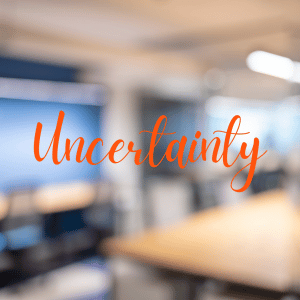


 What is High-Intensity Interval Training – HIIT
What is High-Intensity Interval Training – HIIT




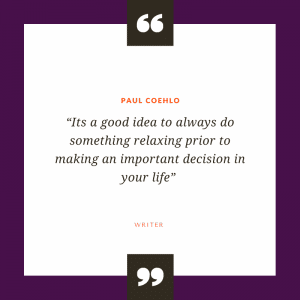
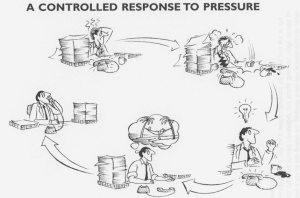
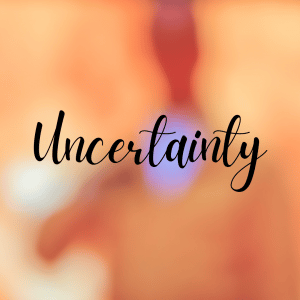


 What is Fomo?
What is Fomo?
 The Resilient Leader
The Resilient Leader
 Emotional Resilience and Stress – What is the Difference?
Emotional Resilience and Stress – What is the Difference?
 How to be Resilient in Difficult Situations?
How to be Resilient in Difficult Situations? The Cornerstone of Financial Resilience
The Cornerstone of Financial Resilience
 There are many ways to build wealth, but some are more effective than others. One of the best ways to build wealth is to invest in yourself. This means taking the time to learn about financial planning and investing, and then putting that knowledge into action.
There are many ways to build wealth, but some are more effective than others. One of the best ways to build wealth is to invest in yourself. This means taking the time to learn about financial planning and investing, and then putting that knowledge into action.
